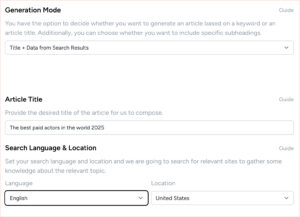In today’s digital landscape, maintaining a consistently high standard of content is crucial for capturing and retaining audience attention. Content Quality Management isn’t just about hitting the publish button; it’s a meticulous blend of art and science.
This article dives deep into the strategies that can help you master the art of producing quality content consistently. From leveraging advanced analytics to understanding audience needs and integrating feedback loops, we’ll explore practical steps and innovative tools that ensure your content doesn’t just meet expectations but exceeds them.
Whether you’re a seasoned content creator or just starting out, mastering these strategies is essential for standing out in a sea of digital noise.
Importance of Consistent Content Quality
Maintaining consistent content quality is crucial for building and retaining your audience’s trust. When you deliver what they expect, they’re more likely to return and engage with your content further. Imagine you’re a regular at a café. You keep going back because the the coffee is always stellar. Now, apply that to your content. If it’s always good, people will come back for more.
Consistency isn’t just about keeping your audience happy; it also sets you apart from competitors. If your content swings wildly in quality, you’ll confuse and eventually lose your followers. But if you’re the reliable source they can always count on, you’ll build a loyal base that not only trusts but also recommends your content to others.
Defining Content Quality Standards
Setting clear content quality standards ensures you consistently meet or exceed your audience’s expectations. You’ll need to define what high-quality content looks like for your specific audience and objectives. Start by identifying key characteristics such as accuracy, relevance, and engagement. Ensure these criteria are measurable, so you can actually assess content against them.
Consider your brand’s voice and tone; this should resonate through all pieces to maintain consistency. Ask yourself if your standards align with your audience’s needs and values. Are you providing the depth of information they require? Is your content accessible to all levels of readers?
By answering these questions, you’ll establish a robust framework that guides your content creation, steering it towards success.
Implementing Quality Control Processes
Once you’ve established content quality standards, you’ll need to implement effective quality control processes to maintain them. Start by training your team on these standards to ensure everyone’s on the same page. You’ll also want to create a clear, step-by-step workflow for both creating and reviewing content. This includes assigning specific roles and responsibilities to streamline the process.
Regular reviews and feedback sessions are crucial. Schedule them consistently to catch and correct deviations from your quality standards early.
Don’t forget to document these processes meticulously. Keeping detailed records helps you track performance over time and identify areas for improvement.
By staying vigilant and responsive, you’ll ensure your content remains top-notch and consistent.
Tools for Monitoring Content Consistency
Effective tools are essential for monitoring the consistency of your content across various platforms. Invest in content management systems (CMS) that feature built-in analytics to track how your content performs and adheres to brand standards.
Consider using software like Grammarly or Hemingway to ensure linguistic consistency and readability. SEO tools such as Moz and Ahrefs can help monitor keyword consistency and enhance search engine visibility.
Additionally, use social media management tools like Hootsuite or Buffer to oversee content deployment and maintain uniformity across channels. Don’t forget about visual consistency; tools like Canva and Adobe Spark provide templates that keep your graphics sharp and aligned with your brand’s aesthetic.
With these tools, you’ll keep your content consistently compelling and on-brand.
Training Team Members on Quality Guidelines
Ensuring all team members understand and follow content quality guidelines is crucial for maintaining high standards. You’ll want to start with comprehensive training sessions that clearly outline your company’s expectations and the specifics of the quality standards. It’s essential to make these guidelines accessible and ensure they’re easy to comprehend.
Incorporate practical examples and interactive elements into the training to help team members grasp the concepts better. Don’t just hand over a manual; engage them with workshops where they can practice applying these guidelines in real-world scenarios.
This approach not only clarifies what high-quality content looks like but also empowers your team to consistently apply these standards in their daily tasks, enhancing overall content quality across the board.
Establishing Feedback Loops for Improvement
Establishing feedback loops is crucial for continually enhancing the quality of your content. By integrating systematic feedback mechanisms, you’re not just guessing what works—you’re learning from direct responses.
Start by gathering insights from your audience through surveys, comment sections, and social media interactions. Don’t overlook the value of peer reviews within your team.
You should also harness analytics to measure engagement and identify patterns that indicate success or areas for improvement. It’s about creating a responsive environment where every piece of feedback is a stepping stone to better content.
Remember, the goal is to evolve by understanding what resonates with your audience and refining your approach accordingly. Make feedback your tool, not just a formality.
Auditing Existing Content for Compliance
You must audit your existing content to ensure it meets current standards and regulations. Start by reviewing all published materials against your industry’s compliance checklist. Are your statements accurate and up-to-date? Check for any content that could be misleading or has become outdated due to recent changes in law or policy.
Next, assess accessibility. Is your content easily understandable and reachable to all audiences, including those with disabilities? Tools like screen readers and text-to-speech should work seamlessly with your content.
Lastly, verify the security of the content. Ensure that sensitive information is protected and that privacy standards are upheld. Regular content audits help you avoid legal pitfalls and maintain your credibility.
Measuring Success with Performance Metrics
To effectively gauge the impact of your content, you’ll need to track specific performance metrics. Key indicators include engagement rates, such as time on page and bounce rates, which tell you how compelling your audience finds your content.
You’ll also want to monitor conversion rates to see how well your content drives actions, like signing up for a newsletter or purchasing a product.
Additionally, track social shares and comments to assess how your content resonates with users and encourages interaction.
Don’t forget about SEO performance; rankings and organic traffic can provide insights into how well your content is optimized for.
By analyzing these metrics regularly, you can make informed decisions to enhance your content strategy and achieve your business objectives.
How does cultural sensitivity impact content quality management across different global markets?
Cultural sensitivity significantly influences content quality management in diverse global markets. Understanding varied cultural norms and values is crucial for creating relevant and resonant content that fosters engagement and avoids potential misinterpretations or offenses.
What role does artificial intelligence play in enhancing the efficiency of content audits?
Artificial intelligence plays a crucial role in enhancing content audits’ efficiency by automating processes, analyzing vast amounts of data quickly, and identifying patterns that might be overlooked.
It streamlines and improves the overall auditing process.
How can small businesses implement effective content quality management with limited resources?
To implement effective content quality management with limited resources, focus on creating high-quality, relevant content. Utilize free tools like Google Analytics and social media insights. Engage with your audience for feedback. Regularly audit your content for improvements.
Conclusion
In managing content quality, consistency is key. By implementing strategies like style guides and regular reviews, you can ensure your content remains cohesive and engaging.
Remember to maintain a clear and unified voice throughout your materials to build trust and credibility with your audience.
Consistent content not only enhances user experience but also strengthens your brand identity.
Stay committed to mastering these strategies for long-term success in your content management efforts.





